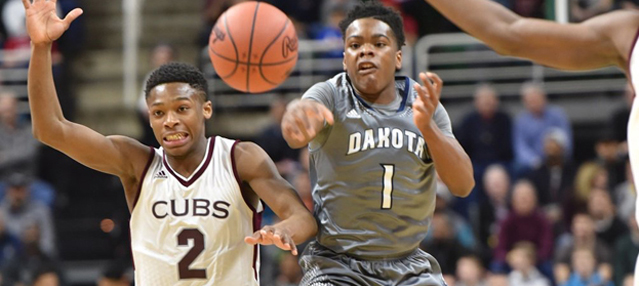Life of An Athlete - Improving Your Performance
Improving Your Performance
Information about the negative performance effects of alcohol, marijuana, and other drugs and how diet, proper sleep, and training can improve your athletic performance.
Alcohol, Marijuana, and Other Drugs – The Research
Alcohol, Marijuana, and Other Drug Use Can Negatively Affect Your Developing Brain
Research shows that…
- A teen’s brain is a “work in progress” and doesn’t stop developing until the mid-20s.
- You can become addicted to any substance, including alcohol, marijuana, and tobacco and prescription (opioid) pain medication MUCH more quickly than adult because your brain is still developing. (Contrary to what many people believe, we have learned from research that marijuana IS an addictive drug.)
- Regular use of alcohol, marijuana, or other drugs can cause permanent damage to your developing brain.

Alcohol, Marijuana, Tobacco, and Other Drug Use Interferes with the General Physical and Mental Ability Needed to be a Successful Athlete in the Following Ways:
Research shows that…
- Strength/Speed is reduced.
- Training-Recovery-Adaptation is affected.
- Lung Capacity is decreased.
- Reaction time is slowed.
- Your neuromuscular connection is impacted.
- Performance time is decreased.
- The ability to think clearly is reduced.
The Impact of Alcohol on Athletic Performance
Research shows that…
- Fifteen to 30% of athletic performance is lost when athletes drink alcohol.
- ONE NIGHT of binge drinking ELMINATES the impact of 2 WEEKS of training.
- Athletes who drink regularly are 2 times more likely to be injured as non-drinkers. The injury rate is 54% for drinkers and 24% injury rate for non-drinkers.

The Impact of Marijuana on Athletic Performance
Research shows that…
Marijuana use negatively affects:
- Timing and movement,
- Reflexes and the ability to visually track,
- coordination,
- concentration,
- memory and
- judgment.

Abuse of Prescription Pain Killers (Opioids) Can Lead to Addiction
Research shows that…
- Athletes may be at higher risk of developing an addiction to pain medication, e.g. Vicodin, Percocet, OxyContin, etc. because of sports injuries for which opioid painkilling medication may be prescribed.
- We need to be very aware of the dangerous potential for pain medication prescribed for an injury to end in addiction.
- Athletes taking prescriptions for treating pain should stop use as soon as soon as possible.
- Abuse of Prescription Painkillers can lead to Heroin use/addiction.

Check Out the Facts about the Negative Effects of Teen Use of Alcohol, Marijuana, Other Drug Use and Prescription Drug Abuse at:
Underwood, John. American Athletic Institute
National Institute on Drug Abuse for Teens
National Institute on Drug Abuse for Teens - Marijuana
Partnership for Drug Free Kids - The Tean Brain
“Sports Injury Leading to Oxycodone Addiction”. Oxycodone Addiction Help. October 30, 2014.
Diet & Nutrition
Every time you’re tempted to eat junk food, fast food, convenience food or sugar remember this fact:
"What you put in your body is what you’ll get out of it."
Proper nutrition will increase your energy level and improve your performance as an athlete. If you want to perform at your best, eat better. The right balance of vitamins, minerals, and nutrients is critical to recovery after a workout as well as during competition. Athletes can influence performance by making smart informed choices about nutrition, sleep, alcohol, and drugs.
Proper diet will:
- Increase your level of performance
- Speed recovery
- Improve the quality of your training
Nutrition for Athletes
The LoA PowerBack Diet was specifically designed for student athletes and provides important nutritional guidance in a way that is easy to understand and implement. Proper nutrition improves athletic and non-athletic performance, while alcohol, tobacco and other similar drugs impede performance in numerous ways.
An athlete’s body requires much greater energy than those who are less active. Proper nutrition is especially important for student athletes who are still growing. When an athlete is training, the body is in a constant state of repair. There is an ongoing process of maintaining and repairing muscle mass that is required to remain structurally capable to perform and compete.
Most athletes engaged in a high level of training should eat every four hours. This maintains blood sugar levels needed to fuel major body systems, like the brain and muscles. If blood glucose levels reach critical low levels, nearly every measurable parameter of body and brain function rapidly declines. Maintaining constant blood sugar levels has the added advantage of improving overall health by reducing the amount of stress hormone released. Stress hormone should be avoided because it tears down muscle capacity.
“Even borderline low blood sugar levels harm performance."
Healthy snacks between meals improve performance by keeping your brain and muscles fueled. Nutritious choices include dried fruit, power bars, or a few sips of watered down Gatorade to help maintain blood sugar levels which is the key to being alert and physically responsive.
If you have special dietary needs, please consult a medical professional and adjust your diet accordingly.
The Power Back Diet
Download a copy of the Power Back Diet and start living healthier today!
Sleep
The central nervous system is the single most important factor in optimal athletic performance. A good night’s sleep is essential to maintaining the central nervous system.
“Players ran faster and made more shots when they got 10 hours of sleep."
A prominent Stanford University study found that student athletes perform better when they get an adequate amount of sleep. According to the study, basketball players ran faster and made more shots when they slept at least 10 hours a night. Brain scans show a dramatic increase in blood flow to the brain after eight hours of sleep in comparison to the brain that received no sleep.
Central Nervous Readiness
After 8 to 10 hours of sleep, you have stored up roughly 14 hours of central nervous system readiness. The brain needs 1.5 to 2.5 hours of REM sleep each night to repair neuronal damage and reboot the brain’s energy levels. Once an athlete has built up a sleep deficit, the body cannot function at optimal levels.
Pictured on the left is a brain scan of a healthy teenager who received 8 hours of sleep the previous night. The picture on the right is a brain scan of a healthy teenager who received 5 hours of sleep the previous night. The blue areas shown are the blood flow to the brain which impacts pre-movement, movement and balance. The teenager to the right does not have as much blood flow to the brain, affecting these areas negatively.
Athletes should be cognizant and use central nervous system reserves wisely. Even activities that you wouldn’t think as draining, such as watching TV, searching the Internet, playing video games or playing on your phone can deplete your reserves.
Adequate sleep should be incorporated into a healthy lifestyle along with proper nutrition and exercise.
Sleep and Recovery
An applicable approach to a lifestyle of recovery and rest for athletes.
Download the ![]() Sleep and Recovery Guide.
Sleep and Recovery Guide.
Training Tips
For optimal performance results, a student athlete needs a customized training plan that is developed in conjunction with a coach or trainer. The student athlete should discuss the training plan with an expert before beginning any program.
Best Training Programs Highlights
Still, the best training programs take into account the following:
- Training consistently will result in the best possible outcome. Athletes should develop a consistent plan and stick to it.
- Cross-training is the key to avoiding injury, getting better results and keeping the workout interesting. Vary your routine.
- Stretching is important. Ask your coach to build a stretching component into your workout.
- Warm ups should come before stretching to help prevent injury. They should also be specific to the sport. Ask your coach to provide the best possible warm ups for your situation.
- Strength training and cardiovascular fitness are required. No matter what the sport, you should incorporate both into your routine.
- Muscles that stabilize are too often ignored. Ask your coach to incorporate drills and exercises that strengthen stabilizing muscles, especially your back and core.
- Most teens benefit from weight training with high repetitions and light weights. There’s more chance for injury with heavier weights.
- As in all things in life, balance is the key. Don’t over train one group of muscles and neglect another's.
- Good form and technique will help you avoid injuries. This is true no matter what the sport.
Immediate Nutritional Recovery
When your workout is done, your training is not. Recovery should start during training. There is a very important timing window for nutrition to take place. This means that if you wait until after your workout to take in nutrients there is lost training effect.
Recovery from the stress of the workout is when you realize the gain from the workout. You cannot gain the adaption in muscle until you recover. Here is a step by step process for recovery during workout:
- Take four to six ounces of a sweet drink (e.g., watered down Gatorade or Power Ade 50/50) to ingest glucose or fructose. This gives you quick sugar intake and results in the body’s release of insulin making your fuel depleted muscles take in glucose from your bloodstream and restarting the refueling process.
- Take in 12 to 16 ounces of a fast protein in liquid form. This could be an organic yogurt shake, protein shake or organic chocolate milk. Liquid is easier for the body to use than sold forms of protein like a protein bar. This contributes greatly to recovery and optimal training.
- Eat 75 grams of carbohydrates, e.g., raisins or fig bars. A small box of raisins contains 56 grams of carbs, so you’ll need a little more than a box or three fig bars. Within one hour, eat a nutritious meal containing at least another 75 grams of carbohydrates.
It’s critical to take in the right nutrition immediately after a workout. It could mean the difference between either taking full advantage of your training or limiting your improvement.

John Underwood, President and Founder of the Life of an Athlete Human Performance Project.




